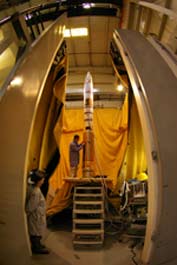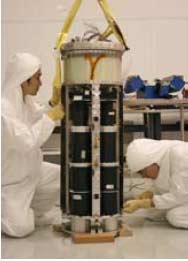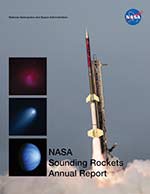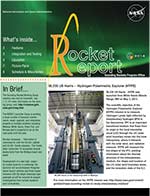 36.226 UG Terrier-Black Brant was launched from White Sands Missile Range, NM on February 25, 2009. The purpose of this mission is to investigate the spectral and spatial properties of the extra-galactic near-infrared background by observing seven science targets. Dr. James J. Bock/California Institute of Technology is the principal investigator.
36.226 UG Terrier-Black Brant was launched from White Sands Missile Range, NM on February 25, 2009. The purpose of this mission is to investigate the spectral and spatial properties of the extra-galactic near-infrared background by observing seven science targets. Dr. James J. Bock/California Institute of Technology is the principal investigator.
Cosmic Infrared Background Experiment (CIBER) is designed to conduct a pioneering search for Infra-Red Background (IRB) anisotropies, and is specifically designed to measure fluctuations at wavelengths and spatial scales where a putative first-light galaxy signal can be best detected and discriminated from foregrounds.
CIBER consists of a two-color wide-field imager to probe first-light galaxy IRB anisotropies; a high-resolution narrow-band spectrometer to determine the absolute zodiacal foreground brightness using the reflected intensity of the 854.2 nm Ca II Fraunhofer line; and a low-resolution absolute near-infrared spectrometer to search for a redshifted Lyman-limit feature in the spectral region between 0.7 – 1.8 μm.
CIBER can conduct high sensitivity observations in a short sounding rocke t flight, eliminating the atmospheric airglow emission that makes
absolute spectroscopy and high-fidelity
degree-scale imaging virtually impossible from
a ground-based or balloon-borne platform.
Unlike existing or planned space-borne
facilities, only CIBER incorporates the highly
specialized instrumentation needed to carry out
these measurements. CIBER will field a 1024 x
1024 InGaAs array being developed and tested
at JPL for the Joint Dark Energy Mission
(JDEM), representing the first scientific
demonstration of this array technology.
t flight, eliminating the atmospheric airglow emission that makes
absolute spectroscopy and high-fidelity
degree-scale imaging virtually impossible from
a ground-based or balloon-borne platform.
Unlike existing or planned space-borne
facilities, only CIBER incorporates the highly
specialized instrumentation needed to carry out
these measurements. CIBER will field a 1024 x
1024 InGaAs array being developed and tested
at JPL for the Joint Dark Energy Mission
(JDEM), representing the first scientific
demonstration of this array technology.




